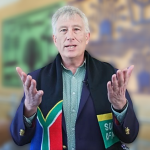The June 16 Soweto Uprising was a watershed event in South African history. It focused global attention on the stark brutality of the apartheid education system. More than any other area, education lay at the core of the anti-apartheid struggle. Led by the country’s valiant youth, the education struggle was indissolubly tied to the quest for a free and democratic South Africa.
The primacy of education is underlined by the fact that following the unbanning of anti-apartheid political organisations and the release of Nelson Mandela from prison in 1990, a process was set in motion for the African National Congress (ANC) to start negotiations with the then-ruling National Party aimed at addressing the smouldering black education crisis.
The unpalatable reality is that despite the reforms implemented by successive ANC governments since 1994, education is democratic South Africa’s biggest policy failure.
A defining feature of apartheid education was the institutionalisation of vast racial inequalities in educational provision, resourcing, access and quality. To undo the legacy of apartheid, the government enacted a series of policy and legislative reforms to redress the widespread disparities that dogged the system and to remove infrastructural backlogs in the education sector.
These have included ramping up expenditure on education and initiating a raft of programmes designed to improve the country’s education system. Further, the education authorities have carried out changes calculated to reverse fiscal inequities in the system, undertake curriculum reform and restructure teacher deployment. The latter had been introduced in tandem with moves to harmonise teacher salaries and stabilise teacher-to-pupil ratios in order to raise teacher performance and the quality of teaching.
At the local level, reforms have included the creation of a foundation class before the start of primary school (Grade R), changes to language policies, and initiatives to localise power so as to give school governing bodies more authority over their schools’ admission policies and codes of conduct. What’s more, some schools were turned into no-fee schools where pupils were able to receive an education free of charge, with learning materials provided to them by the school.
In spite of these reforms and the laudable progress in terms of improving access to education, particularly at the level of primary and basic education but also in secondary and higher education, many troubling features of the education system have endured 26 years after the end of apartheid.
Although public spending on education has been consistently high (6.4% of GDP) relative to similar countries, South Africa’s education system has continued to rank among the worst in the world, with maths and science education faring even more poorly.
The reforms have failed to redress historical imbalances. On the contrary, the current system has reinforced inequality by severely constraining the mobility of children from poor families, not least because high-quality education – which has a major influence on social mobility – remains geographically and financially inaccessible to many poor people in South Africa. Consequently, there remains an enormous achievement gap between children in advantaged as opposed to disadvantaged schools. This has dire implications for the policy ideal of fostering inclusive and equitable growth in the country.
The appalling educational outcomes are also partly a function of poor teacher quality and shortages. It is estimated, for instance, that 80% of school teachers lack the content knowledge and pedagogical skill to teach the subjects they are presently teaching. At the same time, the low throughput and high dropout rates along the various levels of the system have contributed to South Africa’s skills shortages. The educationalist Nic Spaull states that only four out of every 100 students who begin school finish a degree within six years of matriculating.
The disparities in education have manifested in a two-tier school regime epitomised by both a dysfunctional schooling system (which encompasses the bulk of township-based schools) and a functional one. Dysfunctional schools are characterised by weak accountability; incompetent school management; a lack of a culture of learning, discipline and order; inadequate learner-teacher support material; high levels of teacher absenteeism; slow curriculum coverage; repetition and high dropout rates; and extremely weak learning.
A sizeable share of education spending is wasted through the ineffective use of resources. The high level of government expenditure on education has not translated into an equitable distribution of resources across schools in the country, with many schools remaining heavily under-resourced. Numerous schools continue to lack basic infrastructure such as electricity and flushing toilets. Additionally, violence in some schools has persisted, with negative repercussions for education outcomes. And given the stranglehold that labour unions such as the South African Democratic Teachers Union have over the education sector, questions have been raised as to whether the government has the freedom to appoint teachers and principals.
The appalling educational outcomes are also partly a function of poor teacher quality and shortages. It is estimated, for instance, that 80% of school teachers lack the content knowledge and pedagogical skill to teach the subjects they are presently teaching. At the same time, the low throughput and high dropout rates along the various levels of the system have contributed to South Africa’s skills shortages. The educationalist Nic Spaull states that only four out of every 100 students who begin school finish a degree within six years of matriculating.
What all this suggests is that the ANC government has done well in terms of promoting education, but not so well in respect of improving the quality of education. There are consequences for the parlous state of public education, and these include a ballooning private school sector, an excess supply of unskilled workers in an economy with a high demand for skilled workers, a plummeting rate of post-school training qualifications, and a massive reservoir of unskilled and under-educated youth.
Of the total number of unemployed South Africans, it is estimated that more than half of them are young – 18 to 35 years. This does not augur well for future social stability in South Africa. Moreover, without a sound basic education system the country will struggle to produce the skills needed to power its modern industrial economy, promote inclusive development and attain global competitiveness. Considering this catalogue of failures, young South Africans can be forgiven for asking whether the sacrifices made by their forebears in 1976 were worthwhile. DM



















 Become an Insider
Become an Insider